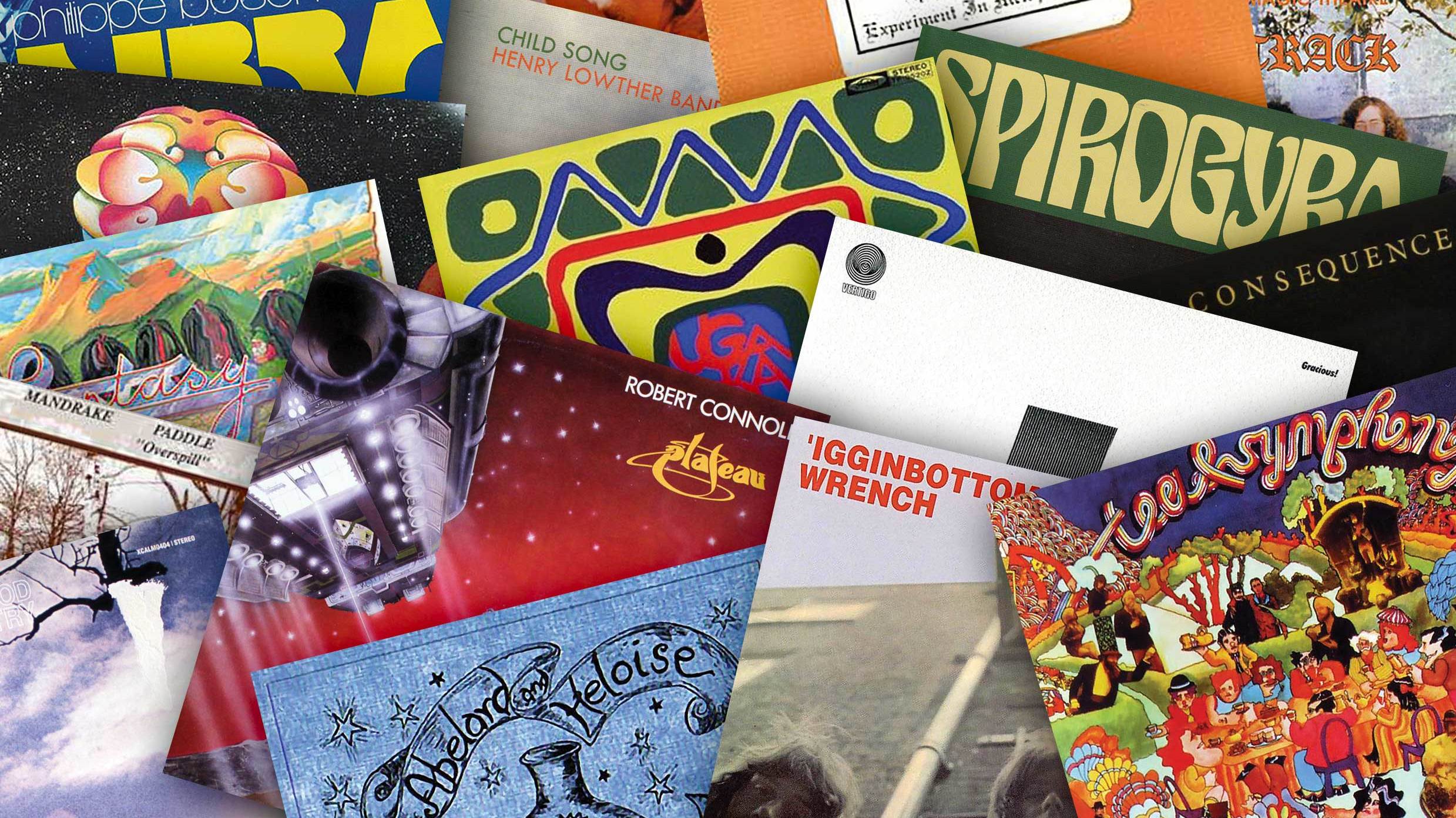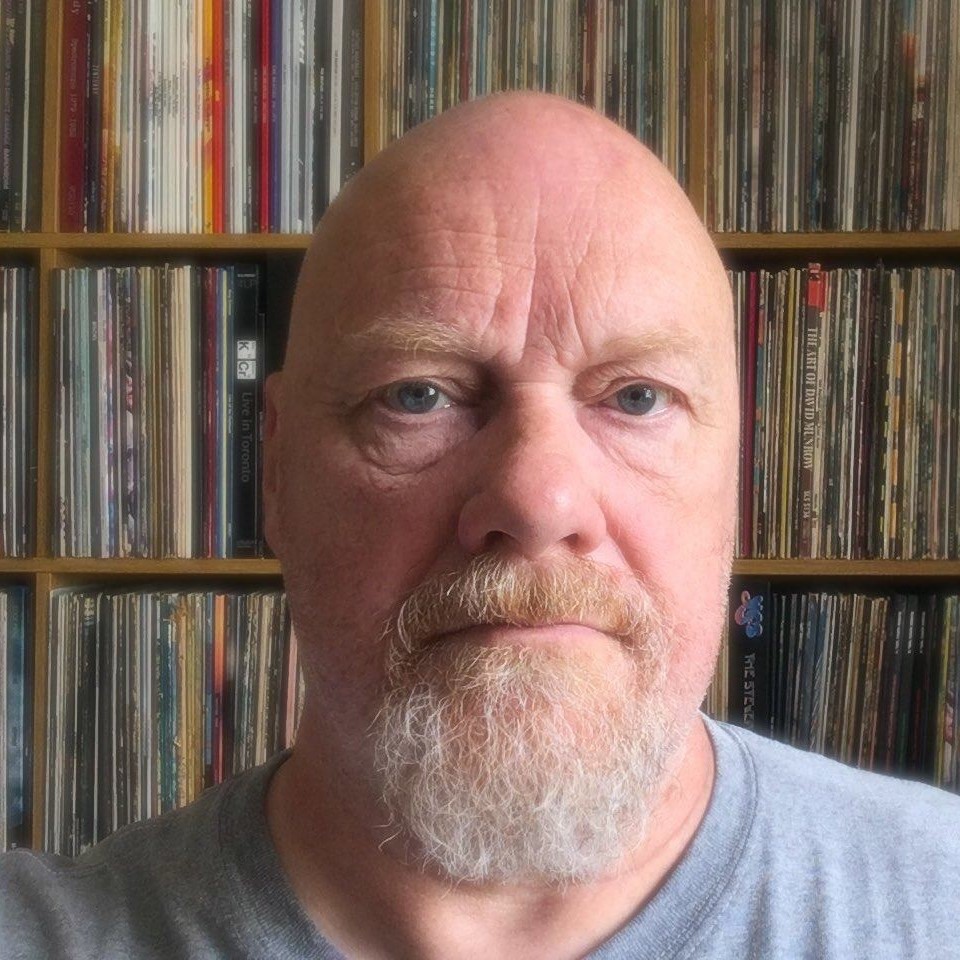So there was Prog, in the confines of the local boozer, when the question came up: “What is the rarest and/or most valuable record in your collection?” Needless to say, it got us all scratching our heads. The dictionary definition of obscure reads: “Not discovered or known about.” In the prog world, calling something rare – nay, obscure even – means that even a prog aficionado may not be able to claim knowledge of its existence. Indeed, a discussion on the most obscure progressive releases of all time is likely to end up in the same kind of heated, unending debate as posing the question: what is prog?
So for the purposes of actually having a finished article to offer you, we pooled our resources and came up with a list of 20 of the most obscure prog albums to kick-start an occasional series on prog rarities, some of which are worth a hefty price. We also want to hear from you, the readers – tell us the rarest prog album in your collection, where you got it, how much it’s worth, and what it means to you. From the inevitable bulging email inbox, we’ll curate a follow-up to this feature, and then we’ll take things on from there. See the end of this feature to find out how to get in touch.
For now, though, enjoy what we have to say about these 20 valuable curios and rarities…

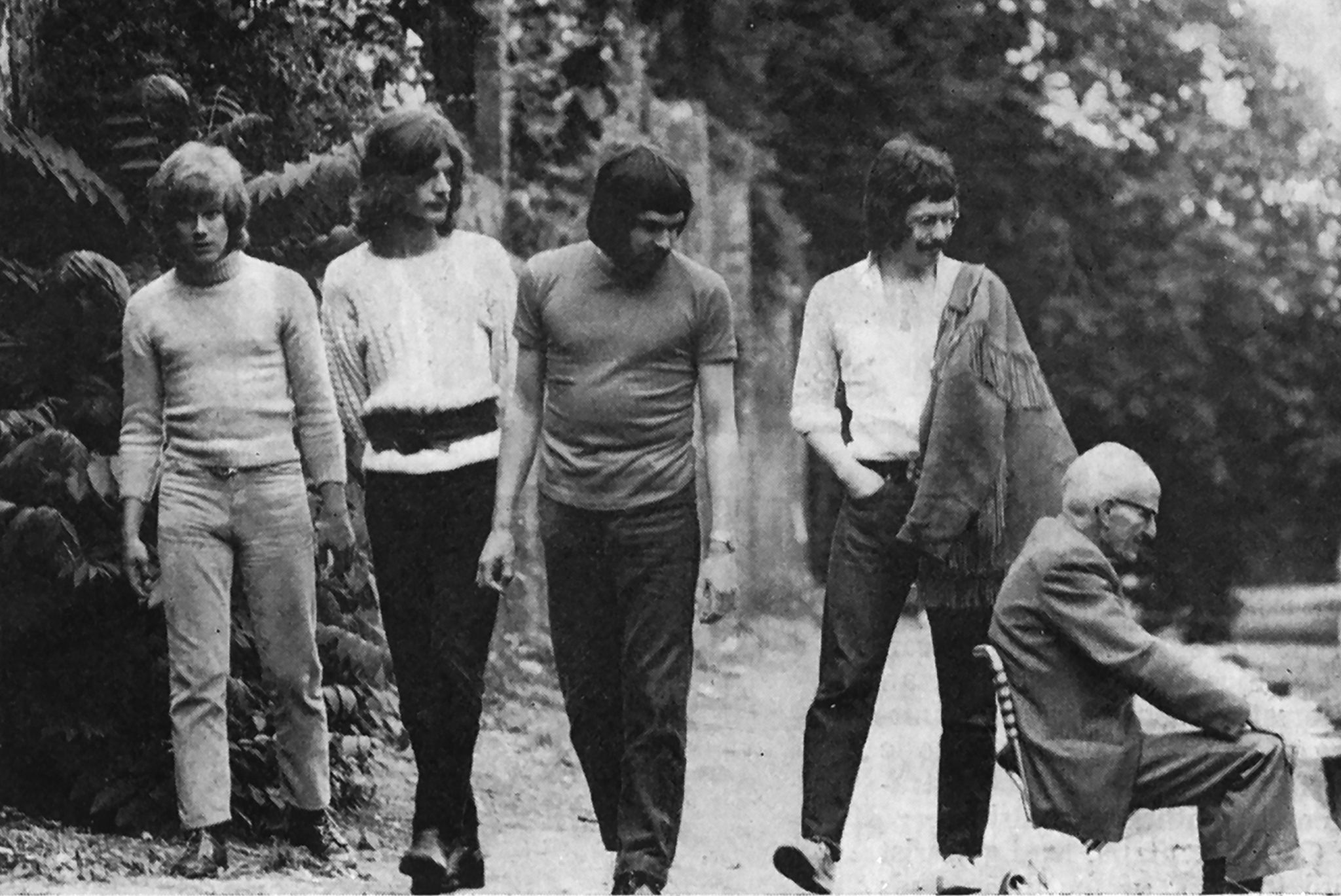
Circus
Circus (1969)
Transatlantic Records
Having started out as a journeymen in the UK R&B boom in the late 60s, The Stormsville Shakers dropped out to become Circus, a more hipper, happenin’ kind of moniker. Fronted by future King Crimson sax player Mel Collins, they became part of the underground scene, enjoying a prestigious residency at The Marquee in London as part of the New Paths season. Here, they shared genre-blurring bills with the likes of the acclaimed Keith Tippett Group and John Surman’s Octet. Sunday Times music critic Derek Jewell was an early champion of the band, describing them as showing “poise and imagination”.
Signed to Transatlantic Records, their sole album is an eclectic mix of pop, jazz and rock. The Beatles’ Norwegian Wood gets the Vanilla Fudge-style heavy treatment, as does Charles Mingus’ jazz anthem II BS, while two Mel Collins-penned ballads lend an air of melancholic baroque pop.
Circus’ cult status failed to help sales. With the band splitting upon Collins’ departure for King Crimson in early 1970, a subsequent lack of promotion ensured the few surviving copies fell into obscurity.
That vinyl editions of the album still change hands between excited collectors for large sums of money is a source of bemusement for Collins: “It was fresh at the time, of course, but I couldn’t tell you why it’s become so sought after these days. Perhaps its because there’s a few interesting cover versions on it? There’s things I don’t like about it, of course, but I suppose it’s of its time. We were so enthusiastic and there were some great ideas in there, but I’m amazed it keeps coming back. Very strange.”
Value: For an original pressing graded on Discogs as Very Good, you can expect to pay upwards of £40, and all the way up to £330 for a Mint copy. SS
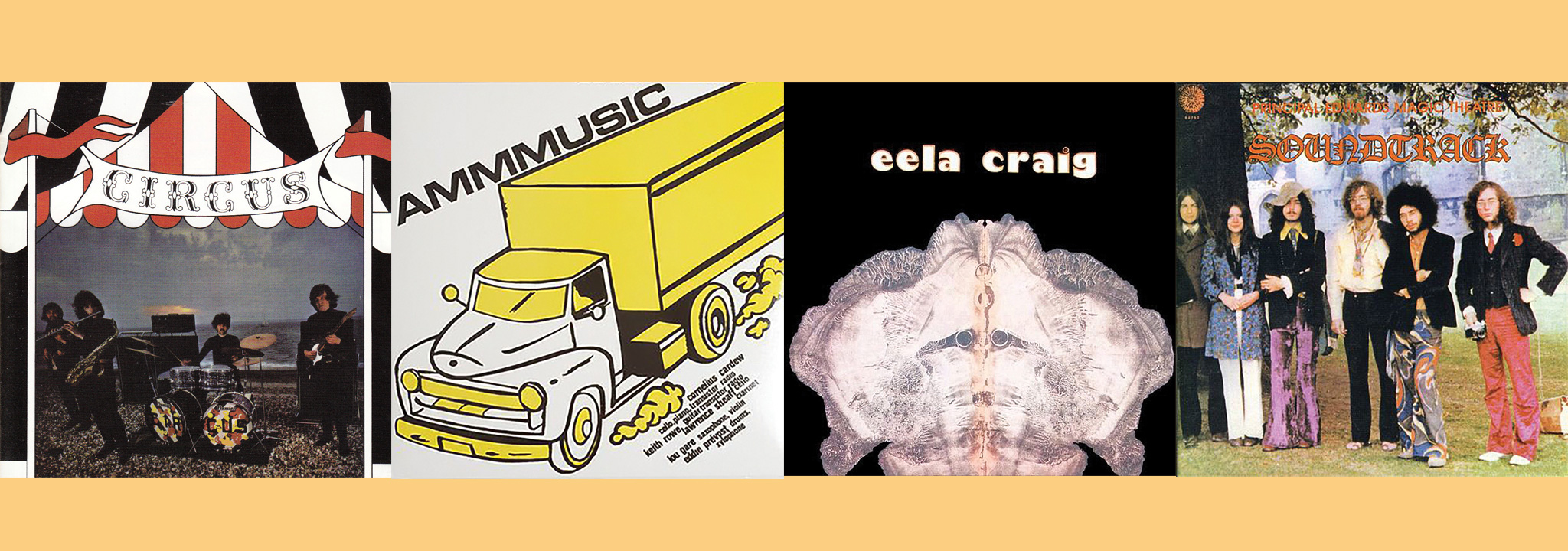
AMM
AMMUSIC (1967)
Elektra
AMM was a floating free-music outfit formed by guitarist Keith Rowe, experimentalist Cornelius Cardew and others who felt confined even by jazz. Syd Barrett was heavily influenced by Rowe’s unorthodox guitar techniques and was said to have been at Sound Techniques studio in June 1966 when AMM recorded their one album for Elektra Records, with early Floyd manager Peter Jenner one of the producers.
The ominous drones and random creakings are not for the faint-hearted, expecting songs (subsequent onslaught The Crypt rose to terrifying levels of bombardment). An AMM line-up still operates today.
Value: Although later reissued, Elektra originals have sold for £700. KN
Eela Craig
Eela Craig (1971)
Pro-Disc
Austria has never been one of prog’s great outposts, but it did give us Eela Craig, a hairy sextet whose debut LP was a dense synthesis of foraging jazz blues and keyboard-heavy psychedelia. Led by Fairlight pioneer Hubert Bognermayer, they signed to Virgin in the mid-70s, by which time they’d become altogether more symphonic and had begun singing in a variety of tongues, including Latin.
Original pressings of their first album remain ridiculously obscure, largely due to the fact that it was issued in a limited run of 1,500 on a tiny local label, Pro-Disc.
Value: Expect to pay upwards of £500 for a decent copy. RH
Principal Edwards Magic Theatre
Soundtrack (1969)
Dandelion
John Peel saw Principal Edwards Magic Theatre play their debut gig at Portsmouth Guildhall and was so taken by their strongly narrative song suites, accompanied by choreographed dance and mime, that he signed the 14-person collective (including sound engineers and lighting designers) to his nascent Dandelion label, on which Soundtrack was one of the first releases in 1969.
The follow-up was The Asmoto Running Band, produced by Nick Mason in 1971, and the band left Dandelion shortly before the label went under. But even without the benefit of the stage show, Soundtrack more than holds its own as a musical statement from this most singular of progressive
rock groups.
Value: Upwards of £40 for a copy in Very Good condition. MB
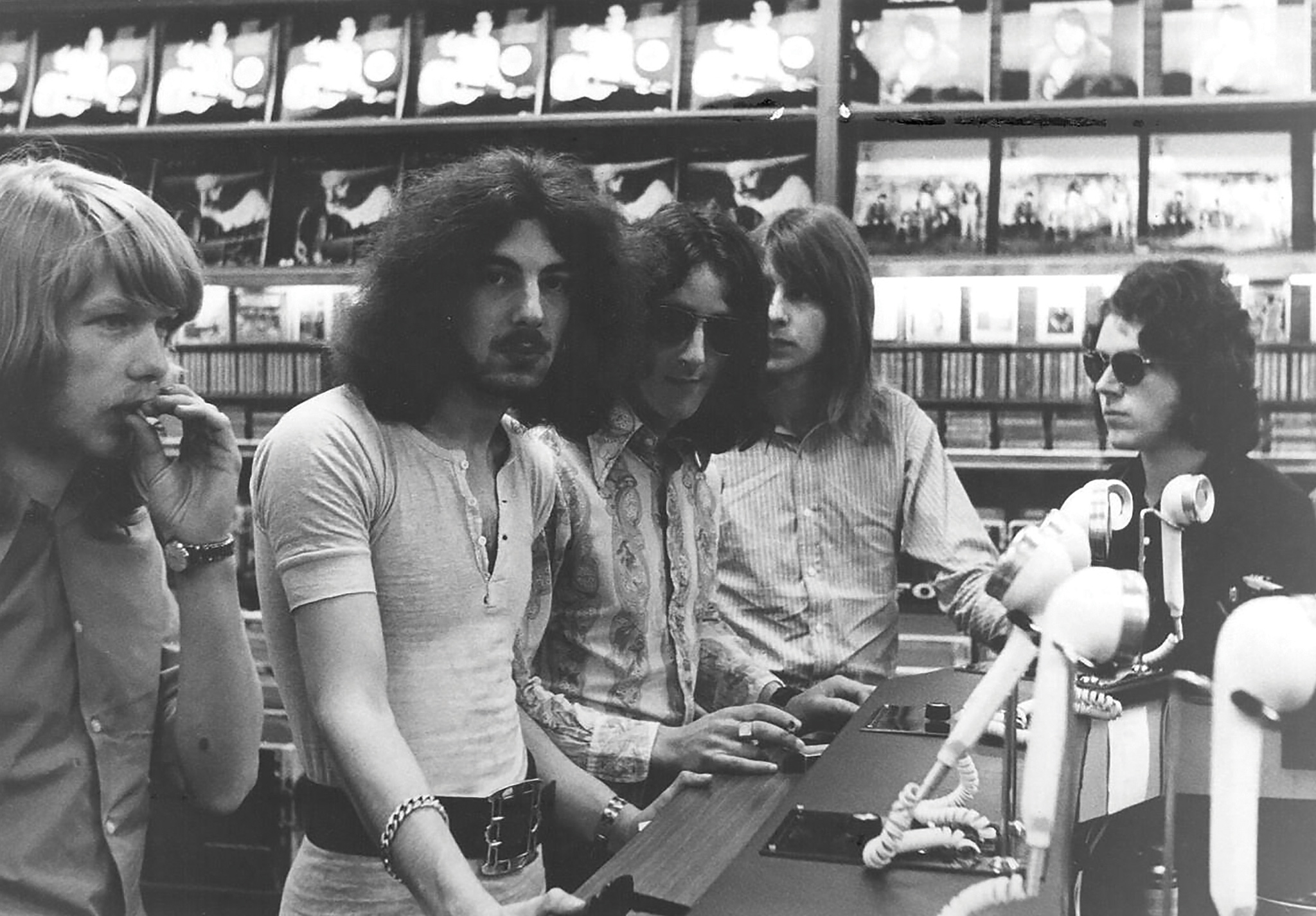
Gracious!
Gracious! (1970)
Vertigo
Formed in 1967, Gracious! were initially a pop band under the auspices of legendary producer Norrie Paramor, but were soon having loftier ambitions. Keyboardist Martin Kitcat introduced classical elements and by 1969, their music had become increasingly eclectic.
“I’m not comparing us specifically with King Crimson,” says guitarist Alan Cowderoy, “but they had a progressive thing with a collision of jazz and rock that hadn’t really been done before. Ours was that kind of collision but on a much smaller scale.”
“We sat Norrie down and played him some more ‘underground’ music, longer pieces,” says drummer Robert Lipson. “He said, ‘Listen guys, I can’t do anything for you. It’s not in my area, but I’d be happy to help you wherever I can.’”
Gracious! released a single, Once On A Windy Day, in 1970 and were obliged to cut it down from the 18-minute version that they were playing live. Their self-titled debut album included the 17-minute long The Dream – which they were required to record in a single take – and was one of the highlights of the early Vertigo catalogue, featuring a striking Barney Bubbles cover design.
David ‘Kid’ Jensen devoted an entire show on Radio Luxembourg to the group and they played at the 1970 Isle Of Wight Festival. But Vertigo weren’t having much success with their more progressive groups and Gracious! weren’t doing enough gigs. Lipson and Kitcat left due to a lack of income, disputes arose over writing credits and by 1972, the group who had promised so much were no more.
Their second album, This Is… Gracious!, was passed over from Vertigo to Philips, to be released posthumously in 1972 as part of their budget series. Although the first pressing of their debut had been distributed across Europe, no more were manufactured and it soon became a collector’s item.
Value: A hefty £375. MB

Milkwood Tapestry
Milkwood Tapestry (1969)
Metromedia
New York psychedelic folk-rock duo Milkwood Tapestry (Roland Antonelli and Joseph Ransohoff) only recorded one album – for Metromedia in 1969 - but, those lucky enough to have stumbled on it hold their heady blend of acid fuzz, Love-style baroque, fluty Tull textures and Incredible String Band whimsy in high esteem. Titles such as Wondrous Fairy Tale, Sea Of Marshmallow Bees, Pink Painted Butterfly and Tockless Time Morning may even paint a slightly unrepresentative picture of the deeper, often evocative delights within.
Value: It’s been reissued but expect to pay upwards of £50 for anoriginal pressing. KN
Mandrake Paddle Steamer
Overspill (1989)
Forgotten Jewels
It isn’t easy to forget a name like Mandrake Paddle Steamer and this writer recalls the Walthamstow outfit being the first to play legendary UK prog epicentre Aylesbury Friars in June 1969. The band had already done a Peel session, supported The Nice, released exotic psych-prog hybrid Strange Walking Man as a Parlophone single and announced an album was imminent – good news for those craving proto-prog epics such as The Ivory Castle Of Solitaire Husk, Cooger And Dark and Janus Suite on wax. But then… nothing, although a German company later pressed
a rag-tag bag of tracks, which still created a high-priced rarity.
Value: We’ve seen the 80s German compilation going for £50. KN
Fantasy
Paint A Picture (1973)
Polydor
This Kent-based band were originally named Firequeen when they signed to Polydor in 1973, but changed their name to Fantasy. This fitted more closely with the tenor of the lyrics, particularly the title track and Gnome Song. Their keening lead guitar and mellotron chorus surges made them close companions to the likes of Genesis and Barclay James Harvest. The band recorded a second album Beyond The Beyond, but split before it was released. With a defunct band on their hands, Polydor never re-pressed Paint A Picture, hence the eye-wateringly high prices it commands.
Value: While both albums are available on CD, the original vinyl costs £620. MB
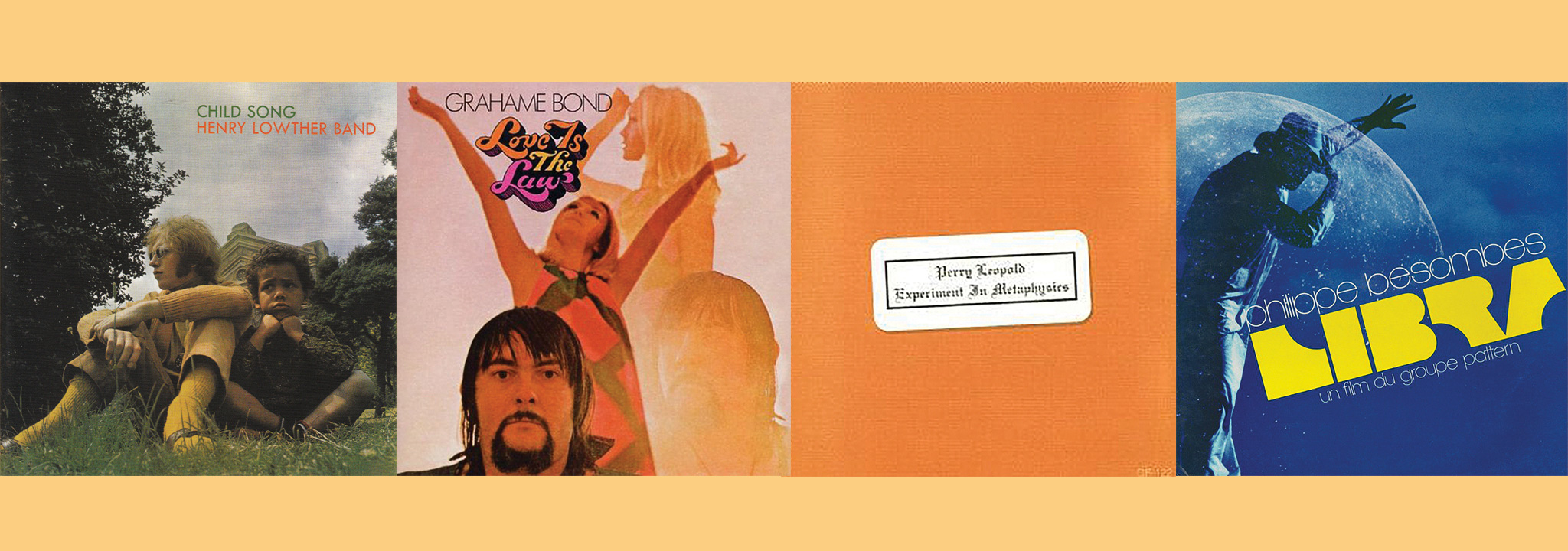
Henry Lowther Band
Child Song (1970)
Deram
By the time trumpeter Henry Lowther returned to the UK after appearing at Woodstock in 1969 with the Keef Hartley Band, he was a hot property who promptly scored a solo record deal with Deram. For Child Song, recorded in just a couple of days, he had complete artistic freedom. Deram bosses and even his own management were taken aback when instead of delivering something akin to his former band’s blues rock, Lowther turned in a beguiling hybrid of jazz and rock. Lowther, who would go on to work with Talk Talk and many others, constructed beautifully nimble themes, orchestral details and sparkling passages of graceful, melodic improvisation. Interestingly, the spectral electric piano of Mike McNaught and the rockish grooves from future Gilgamesh drummer Mike Travis provide a Canterbury-esque ambience.
Keen to experiment, when Lowther was searching for a large gong, producer Neil Slaven found that a master tape from a Pink Floyd session had exactly what they were looking for. “He set about it with a razor blade on the editing block, cut out the bit of gong we needed and pasted it into our recording. An early example of sampling,” smiles Lowther.
When released in 1970, it was eclipsed by the greater appeal of Soft Machine and Nucleus and was quickly deleted. Now incredibly scarce, Lowther – who still has two copies, plus an original acetate – finds it odd that the record has become so collectable. “I made Child Song without thinking anything more about it. It’s not like you set out to make something historical, or something you think will be remembered. You don’t usually like your own work but I have to say I like this album and I feel very proud of it.”
Value: Prices start at over £200 for Good+ condition, while a Mint-graded copy is over £400. SS
Graham Bond
Love Is The Law (1968)
Pulsar
Now known as a key progenitor of UK prog, former Organization leader Graham Bond was fighting drug addiction and was deep into occultist Aleister Crowley when he visited America in 1968 and recorded two albums with Pulsar.
Stark, soulful and almost desperately haunted, the album was ignored for decades, but has now been reissued by Esoteric.
Value: £40 for an original. KN
Perry Leopold
Experiment In Metaphysics (1970)
Self-released
This Philadelphia folkie recorded his first album, in 1970. Deeply spiritual in tone, it was printed in a single run of 300 copies. Most were supposedly given away while busking, meaning originals are now almost impossible to find. Follow-up Christian Lucifer, continued in the same vein. Having relinquished control of the studio masters, Leopold used the reel-to-reel tapes for a later release on CD.
Value: Expect an asking price of around £700. RH
Philippe Besombes
Libra (1975)
Pôle
French electronic pioneer Philippe Besombes’ Libra is one of the last century’s most startling slabs of cosmic experimentalism and anarchic progressive attitude, but it’s so obscure that original copies rarely exceed £100. Besombes had started creating music in his self-built studio by the early 70s, often collaborating with friend Jean-Michel Jarre. When commissioned to score a movie called Libra, which had been edited around Pink Floyd’s Ummagumma and Atom Heart Mother, he used those as a launchpad to create a stunning collage of avant vocals, sepulchral organ, raging rock and extraterrestrial electronics. Thankfully, Libra leads a new box set of Besombes’ early work from Purple Pyramid.
Value: £75 for a Very Good copy. KN

Robert Connolly
Plateau (1978)
Tube
Long before he became a filmmaker, Canadian Robert Connolly released Plateau, a semi-symphonic concept album that dealt with alien visitations to Earth across the millennia, complete with an eight-page comic book. Cue plenty of Moog and mellotron, burnished with guitar, narrated passages and guest vocals from Sandra Willick. Songs like Plateau Of Naska (sic) and Power Of Giza betray a fascination with author Erich von Däniken, while the 14-minute Journey (a study in astral projection) dominates side two.
The project came about after the break-up of Connolly’s band, Plateau. “We were a showband that pretended to be aliens who had landed on earth and were studying the inhabitants of the local bars,” he explains today. “So it was campy, with multi-image projectors. We were inspired by Chariots Of The Gods and Close Encounters.”
Despite interest from several local labels, a record deal failed to materialise. Connolly duly decided to build his own studio and “write some songs to fill out an album. I hired a comic book artist to put together a storyboard for a feature film I wanted to produce, an animated movie like Yellow Submarine. The album was my demo to take to Hollywood. I pressed a minimum of 1,000 copies.”
He kept 200 as bait for a deal, but despite being taken on by Herb Cohen, Frank Zappa’s business partner, Connolly quickly became disillusioned. “That’s where it all started to go crazy,” he recalls. “I saw the ugly side of Hollywood so I decided to move back to Canada and become a record producer. I picked up a few heavy metal bands such as Killer Dwarfs, and got Lee Aaron started on her career.”
Connolly went on to make successful TV series’ Passport To Adventure and Timeless Places, among other things. Plateau, meanwhile, has been unfairly consigned to the dustbin of history.
Value: Copies occasionally surface on eBay, though be prepared to pay three figures for a mint artefact. RH
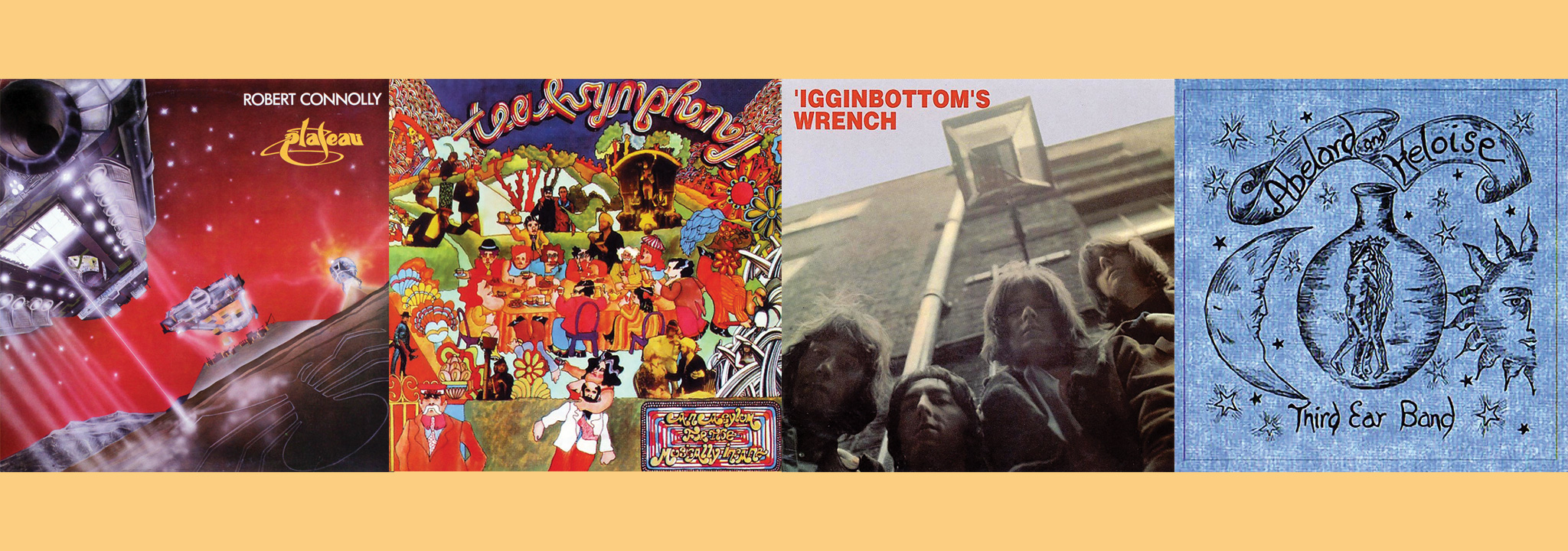
Tea & Symphony
An Asylum For The Musically Insane (1969)
Harvest
In 1969, with underground music threatening to go mainstream, nascent EMI subsidiary Harvest released a welter of new music to test the currents, and then cut back drastically in 1971. Alas, one of the bands who didn’t survive the clearout were the largely acoustic Birmingham-based trio Tea & Symphony. They released two albums on the label – the second being the partly narrated Jo Sago – but were just too weird to keep on.
This, their debut, is quite fabulously uncommercial, careering through eccentrically arranged mutations of ragtime, blues rock, pub singalongs and Incredible String Band-style trippy folk forms.
Value: The original LP goes for £300. MB
’Igginbottom
’Igginbottom’s Wrench (1969)
Deram
The one-off album from this Bradford quartet features a young Allan Holdsworth, who not only provides suitably dazzling lead guitar licks, but also handles lead vocals on songs that deal with the meaning of life, mysterious ladies and interstellar travel. Sadly, ’Igginbottom were just too jazzy for the rock scene and, despite endorsements from luminaries such as Ronnie Scott, deemed not ‘authentic’ enough for the jazz scene.
Falling between these two worlds was enough to guarantee them and their only LP a ticket to obscurity. Finding an original copy isn’t easy.
Value: If you do find one, it’ll cost you between £60-£345! SS
Third Ear Band
Abelard And Heloise (1970)
Sonic Book
In 1970, while playing in Germany, Third Ear Band were commissioned to provide a soundtrack to Herbert Fuchs’ animated film of what oboist Paul Minns has described stylistically as “Hieronymus Bosch/Fuseli-type colour fantasmagoria”. The group were asked to improvise while viewing six distinct sections in a TV recording studio in Munich. The group’s soundtrack – eerier and more austere than on their first two Harvest LPs – was almost completely unknown until first released in 1997 as a CD that came with Luca Ferrari’s book on the group, Necromancers Of The Drifting West. It has since become generally available on CD.
Value: The CD version sells circa £70. MB
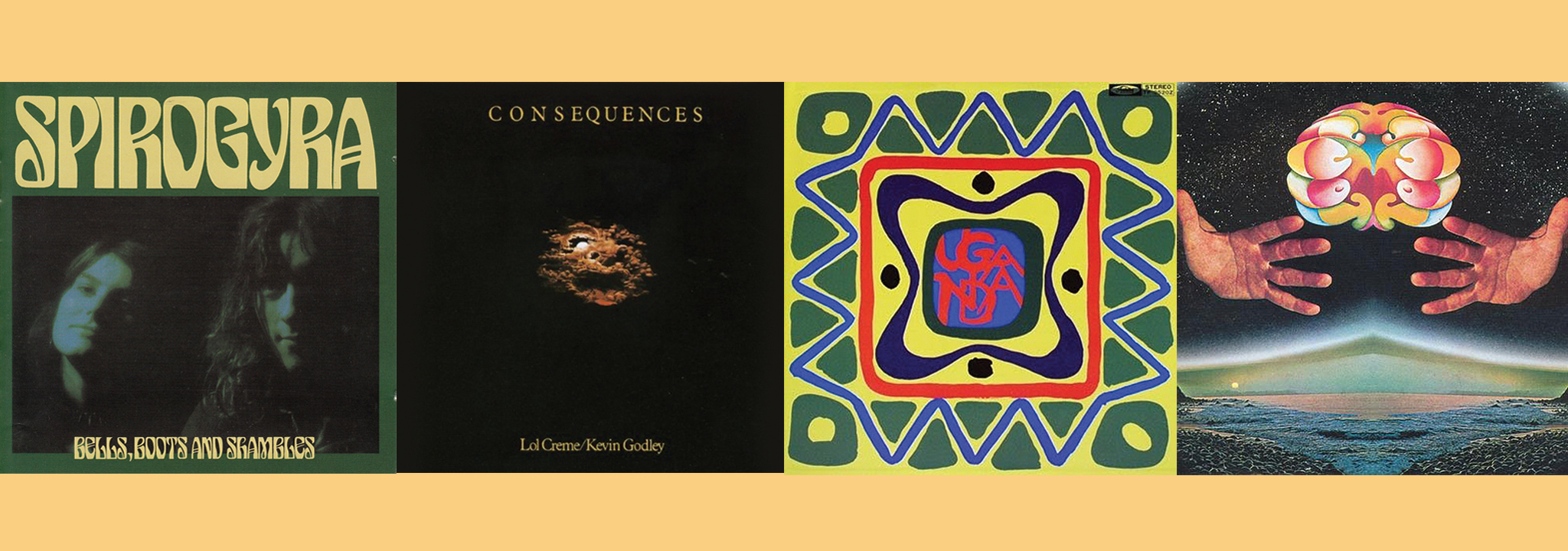
Spirogyra
Bells, Boots And Shambles (1973)
Polydor
Ask most fans of progressive music to list groups from the Canterbury scene and the chances are it’ll include the usual suspects: Caravan, Soft Machine, Egg, Gong and so on. Only in very rare cases will someone mention Spirogyra. Led by the charismatic singer and guitarist Martin Cockerham, the group formed in Canterbury itself in 1969, at Kent University. A new recruit to the group was future Northette and Top Of The Pops star Barbara Gaskin,
on vocals.
“It was all in the first term. Suddenly I was in a band and we had a year off university. The band got a three-album deal with B&C and did a lot of touring, so that was us on the way. It was incredibly exciting,” she recalls.
Their 1971 debut, St. Radigunds, named after the street where the band lived and worked communally in Canterbury, ushered in a busy career at home and abroad. Old Boot Wine (1972) remains Gaskin’s favourite. “It took a slightly rockier direction, which I enjoyed. It was experimental, going away from the folky thing.”
Bells, Boots And Shambles (1973), recorded when Gaskin was also a member of The Northettes, the vocal trio providing the angelic harmonies for Hatfield And The North on record and in concert, showcases Cockerham’s most ambitious writing for the group, augmented in the studio by various guests.
With Cockerham’s strident Roy Harper-eque vocals offset by Gaskin’s pitch-perfect harmonies, Bells, Boots And Shambles boasts sumptuous arrangements by legendary folk artist Dolly Collins, lending the album a poignant, magisterial splendour that’s positively cinematic on extended pieces such as The Furthest Point and the 12-minute epic In The Western World. While largely acoustic, it delights in unexpected rhythmic shifts and swift changes in mood. Featuring John Boyce’s lowing cello and Henry Lowther’s yearning trumpet, it’s underpinned and accented by Fairport Convention’s Dave Mattacks’ distinctive drumming.
Max Hole, their manager and producer, regards it as their crowning achievement. “Barbara’s singing on it was great… she had an incredible voice, a very pure, beautiful English voice. At the time, though, I think it did worse than the previous two albums in terms of sales.”
Value: Although recently reissued on CD by Esoeteric, a German imprint on the Brain label sells at £147-£175. Yet such is Bells, Boots And Shambles’ rarity, Discogs currently have no listing for an original Polydor pressing. However, a recent copy on eBay changed hands for an eye-watering £1,148! SS
Godley & Creme
Consequences (1977)
Mercury
Kevin Godley and Lol Creme rejected pop stardom and left 10cc to record this boxed triple-LP concept album just
at the point punk rock broke. Consequences was a vehicle for the duo’s new effects device, the Gizmotron, and it took listeners on a head-spinning aural journey. Despite some moments of 10cc-like melodicism (see
Five O’Clock In The Morning), the sounds of buzzing bees, gurgling plugholes and drunken narration from Peter Cook replaced conventional songs. The ambition and experimentation were boundless; sales less so. Godley later described Consequences as a mix of “sheer brilliance and utter shit”.
Value: CD copies go for between £91-£149. MBL
Akira Ishikawa & Count Buffalo
Uganda – Dawn Of African Rock (1972)
Toshiba Records
Released in 1972, the four tracks on Uganda… act as a meeting point between prog, African, metal and blues – all recorded by a Japanese fusion band. Percussionist Akira Ishikawa visited Africa in 1970 and wanted, like many before and after him, to capture the sounds of the continent on his own record. Writing with composer, Takeru Muraoka, Ishikawa made Uganda…, a truly singular album. The 12-minute opener Wanyamana Mapambazuko (Animals At Dawn) is packed with Ishikawa’s tribal drumming, interspersed with discordant shards of Kimio Mizutani’s electric guitar.
Value: The original 1972 Japanese pressing is impossible to find, while the 2006 German reissue on vinyl sells for around £50. Expect to pay £30 for the excellent CD repackage. DE
Touch
Touch (1969)
Deram
An American outfit, Touch were led by keyboardist Don Gallucci, who was inspired by The Beatles’ Sgt. Pepper’s Lonely Hearts Club Band. Complete with a prescient Roger Dean-style landscape on the cover, their only record is nothing less than the missing link between psychedelia and prog rock, with discursive arrangements, expansive solos and adventurous time signatures. Hendrix was said to be a fan.
Recorded in 1968, by the time it was released in 1969, the band had already split and any potential recognition was swamped by the deluge of progressive rock proper that year, although the fact that they formed in the mid-60s suggests they may even pre-date King Crimson in terms of progressive musical ideas!
Value: For an LP complete with a rare poster, expect to pay £130-£150. SS
Why is this obscure dub album "an important part of the prog world"?
The 10 greatest obscure metal bands from the 1970s who should have been huge
